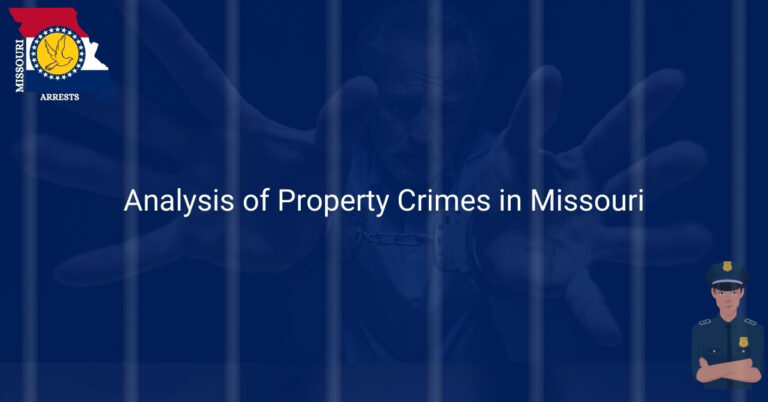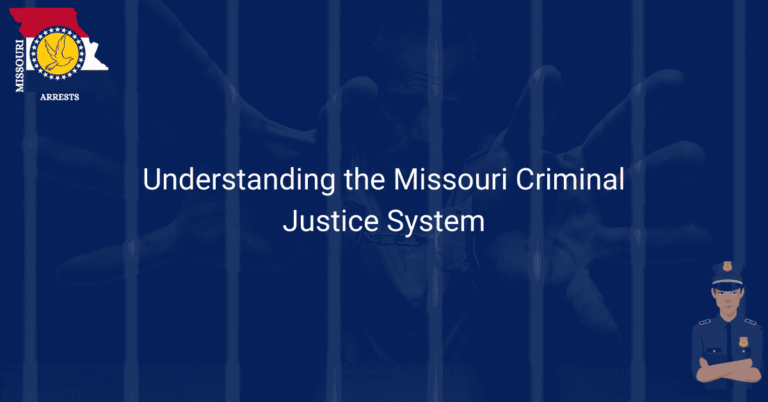Analysis of Missouri Crime Rates
Missouri crime rates have been a topic of interest for many, as understanding the patterns and trends in criminal activities is crucial for ensuring the safety and security of the residents. By delving into the analysis of Missouri crime rates, we can uncover valuable insights that may help in addressing and preventing criminal behavior within the state. This data-driven approach allows us to identify areas of concern, track changes over time, and ultimately work towards creating a safer environment for all individuals living in Missouri.
Examining the intricacies of Missouri crime rates provides a comprehensive view of the various factors that contribute to criminal activities. From the types of crimes that are most prevalent to the demographic groups that are most affected, this analysis sheds light on the complexities of the state’s criminal justice system. By staying informed and updated on the latest crime statistics, we can work towards implementing effective strategies and interventions to combat crime and promote a more secure community for all residents.
Overview of Missouri Crime Rates
Missouri, like many other states in the US, faces its own set of challenges when it comes to crime rates. Understanding the patterns and trends in criminal activities is crucial for developing effective strategies to address and prevent criminal behavior. By analyzing the statistics and data related to Missouri crime rates, we can gain valuable insights into the most pressing issues facing the state.
Patterns and Trends in Criminal Activities
From violent crimes to property crimes, Missouri experiences a wide range of criminal activities. Studying the patterns and trends in these activities can help law enforcement agencies and policymakers better understand the root causes of crime and develop targeted interventions to reduce criminal behavior.
Insights for Addressing and Preventing Criminal Behavior
By analyzing the data on Missouri crime rates, we can identify key factors that contribute to criminal behavior. This information can be used to develop strategies for addressing these factors and implementing prevention programs that target at-risk individuals and communities.
Identifying Areas of Concern
Certain areas in Missouri may have higher crime rates compared to others. By pinpointing these areas of concern, law enforcement agencies can allocate resources more effectively and implement targeted interventions to reduce crime and improve public safety.
Tracking Changes Over Time
Monitoring changes in Missouri crime rates over time is essential for evaluating the effectiveness of crime prevention strategies and interventions. By tracking these changes, we can determine which approaches are working and where adjustments may be needed.
Creating a Safer Environment
Ultimately, the goal of analyzing Missouri crime rates is to create a safer environment for all residents. By using data-driven approaches to address criminal behavior, we can work towards building stronger, more resilient communities that are free from the threat of crime.
Types of Crimes and Demographic Groups
Understanding the different types of crimes and demographic groups that are most affected by crime in Missouri is essential for developing targeted interventions. By focusing on specific crime categories and at-risk populations, we can tailor our efforts to have the greatest impact on reducing crime rates.
Complexities of the State’s Criminal Justice System
The criminal justice system in Missouri is complex and multifaceted. By delving into the intricacies of this system, we can identify areas for improvement and ensure that all individuals receive fair and equitable treatment under the law.
Implementing Effective Strategies and Interventions
With a comprehensive understanding of Missouri crime rates and the factors that contribute to criminal behavior, we can implement effective strategies and interventions that have a lasting impact on reducing crime and creating a safer, more secure state for all residents.
Frequently Asked Questions
Our Frequently Asked Questions section aims to provide detailed information about Analysis of Missouri Crime Rates to enhance your understanding of the topic.
What are the key factors influencing Missouri’s crime rates?
Missouri’s crime rates are influenced by various factors, including economic conditions, demographic changes, law enforcement strategies, and social factors such as poverty and education levels. Understanding these factors is crucial in analyzing and addressing crime rates in the state.
How does Missouri compare to other states in terms of crime rates?
When compared to other states, Missouri’s crime rates vary depending on the type of crime being analyzed. In some categories, Missouri may have higher rates compared to national averages, while in others, it may fall below the average. It’s essential to consider these variations in comparison to other states.
What initiatives are in place to reduce crime in Missouri?
Several initiatives and programs are implemented in Missouri to reduce crime rates, including community policing, crime prevention strategies, rehabilitation programs for offenders, and collaboration between law enforcement agencies and community organizations. These initiatives aim to address the root causes of crime and promote public safety.
How does the analysis of crime rates impact policy-making in Missouri?
The analysis of crime rates plays a crucial role in shaping policy decisions in Missouri. By evaluating crime trends, policymakers can identify areas of concern, allocate resources effectively, and develop targeted strategies to address specific types of crime. Data-driven approaches help inform policy-making and enhance public safety efforts.
What are the challenges faced in accurately analyzing Missouri’s crime rates?
Challenges in analyzing Missouri’s crime rates include data quality issues, underreporting of crimes, limitations in data collection methods, and the complexity of interpreting crime statistics. Overcoming these challenges requires collaboration between researchers, law enforcement agencies, and policymakers to ensure accurate and reliable analysis of crime trends.
How can individuals contribute to reducing crime rates in Missouri?
Individuals can contribute to reducing crime rates in Missouri by being proactive in their communities, supporting crime prevention initiatives, reporting suspicious activities to law enforcement, and promoting a culture of safety and awareness. Community involvement and cooperation play a vital role in creating safer neighborhoods and reducing crime rates.







